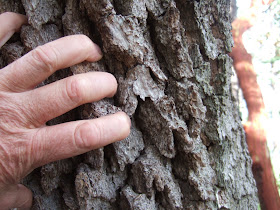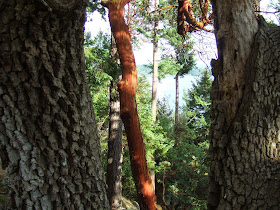Turtleback Complex
This bit of Turtleback Complex is from the southwest of Orcas Island. The Geologic Map of the
The Turtleback Complex was likely a much more extensive volcanic arc and has been postulated as being related to similar aged and type rocks in the Northwest Cascades, the Yellow Aster Complex, and possibly scattered elsewhere in Oregon and northern California. Those linkages will take some more work to be confident of. The Turtleback is part of one of several tectonic terrains in the Northwest Cascades System-San Juan melange. Units within the melange consist of a wide variety of low-grade to high-grade metamorphic rocks of various ages juxtaposed along now extinct tectonic fault lines, but the Turtleback Complex is part of the oldest.
An extinct tectonic thrust fault juxtaposing Turtleback Complex with the younger Orcas Chert is located relatively close to this outcrop.
Just where the Turtleback igneous rocks formed and how they arrived to where they did is a complicated challenge. These igneous rocks did not intrude into the San Juan Islands, but were part of some ancient collision between North America and an off shore terrain. And even after collision, further faulting and movement likely took place with a variety of interpretations. A tough puzzle to solve.
The Turtleback Complex is named from Turtleback Mountain on the north of Orcas turtleback-looks--a-like-turtle.
Besides my rock find I came across the thick skin of a Garry oak on the dry slope. These oaks are not rare on Orcas. But they are scattered and are much less common than the extensive oak forest stands in the south parts of Washington State.
Thick bark of a mature Garry oak
Garry oak trunks and the thin red barked Pacific madrone



Garry oaks habitats with these big oaks are still rare. That bark makes you want to give it a big hug.
ReplyDelete